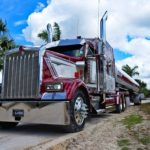Camping is an activity that can be done with family or friends, and although it’s generally fun, there are also many situations that turn it into something a little more extreme than planned. For this reason, it’s important that we search and understand the weather and the environment of the place where the camping will take place before hopping in. Weather conditions can be unpredictable and can easily turn camping into a challenge for some.
Hot Weather
One of the most important things to consider in this type of climate is how much it can affect the local fauna. Hot weather highly increases the presence of insects such as mosquitoes, so don’t forget to bring your repellent when you’re camping in a place with elevated temperatures. Sun exposure is usually one of the things that we will encounter the most while being outdoors, so we cannot lack sunscreen in our camp as well.
Regarding comfort when sleeping, a good option is to carry a mat to avoid sleeping directly on the ground. Neither sleeping bags or baggy clothes are recommended in hot climates. Instead, it is always best to use light and fresh materials. Also, make sure that you don’t forget to carry water with you, both for consumption and for personal hygiene.
Mild Weather
It can be difficult to prepare for a camp in mild weather, since the climate might vary and there are plenty of weather events that can occur. Some of the most common are rain and humidity, however, it’s still possible to be challenged with mosquitoes or other animals. Many climatic variants can also change depending on the geographic space you’re in.
The recommended sleeping equipment for mild weather may vary depending on the terrain you face. Using a simple sleeping bag is often enough to keep you warm at night, though these bags might not be as effective in colder climates as one that’s specifically designed for them. If you need it, you can use a blanket to warm you up as well.
Clothing can be more complicated , since it must cover a wide range of needs. Mild weather clothing should usually be fresh, with accessories that help maintain the temperature of your body, for example, a light cotton sweater with an accompanying jacket.
Cold Weather
This is the type of scenario where the most complicated challenges begin. When camping at low temperatures, it’s necessary to get the appropriate equipment to be able to face the various levels of cold that we can find when carrying out this activity. For instance, the use of a suitable tent is essential. This must-have protection from above and below. In extreme cases, you might even need to sleep on an igloo sleeping bag.
The sleeping bag must be conditioned to withstand extremely low temperatures, and even then, it’s always a good idea to include more items that can provide warmth. Some examples can be plastic bags, aluminum thermal blankets, or even other pieces of clothing that you have around. In fact, most of your body heat can be lost by sleeping directly on the ground, as it’s poorly insulated, so a camping cot can help safeguard you from developing hypothermia.
For the clothing section, it’s advisable to use several layers. You should include thermal clothing, jackets, and raincoats for the rain. Wear them together to keep your body warm when you think it’s necessary.
Don’t let nasty weather ruin your next camping trip. By planning ahead, and making sure you have everything you need, you can help make sure you’re making incredible memories on your next adventure into the woods.













